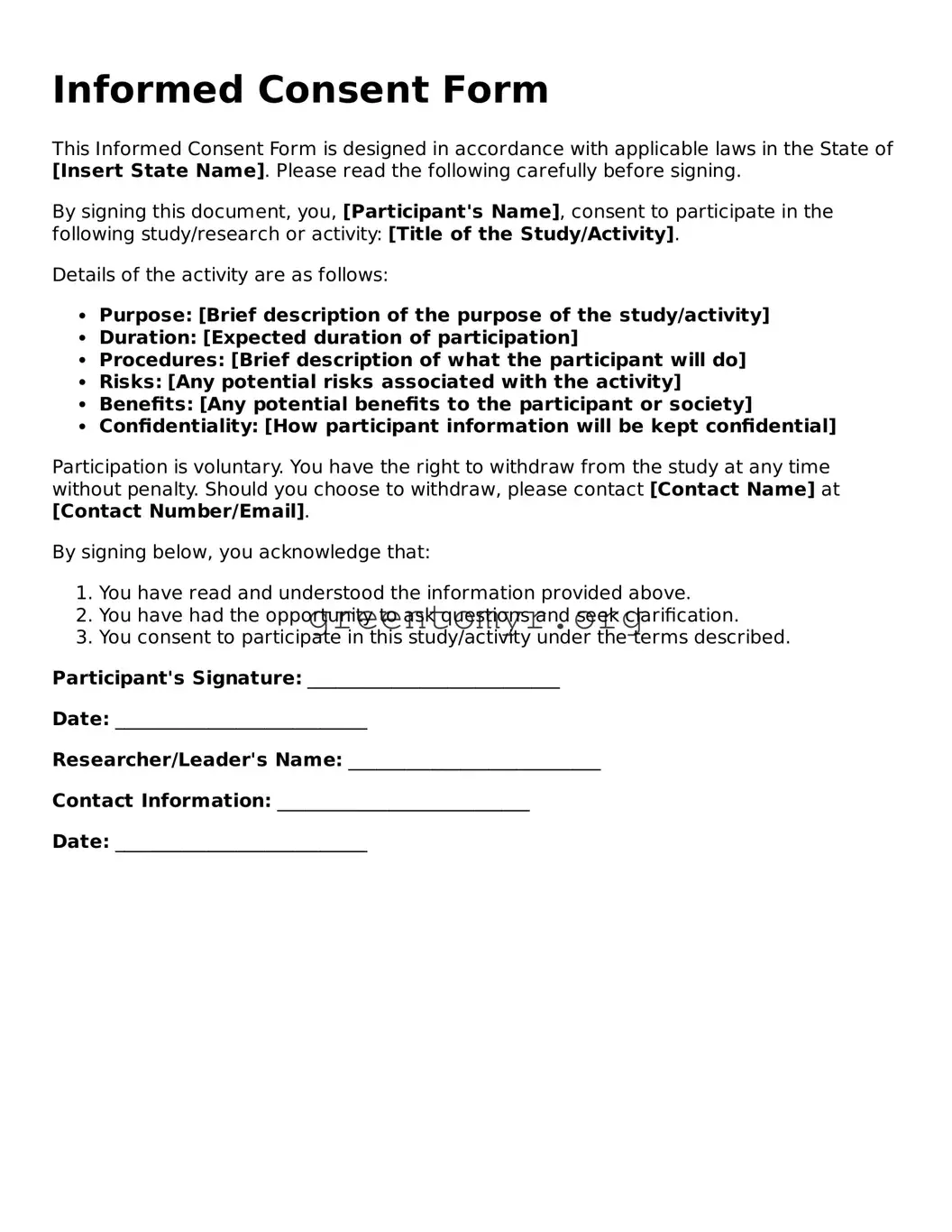A consent form is a document that individuals sign to indicate their willingness to participate in an activity or to allow certain actions to take place. This could involve taking part in research, receiving medical treatment, or allowing the use of personal information. The form provides important information about what the individual is agreeing to, ensuring they understand their rights and the implications of their decision.
The importance of consent forms cannot be overstated. They protect both the individual and the entity conducting the activity. By signing a consent form, individuals are made aware of potential risks, benefits, and their rights in the process. This transparency fosters trust and accountability. Additionally, in legal settings, consent forms can serve as proof that an individual voluntarily agreed to participate, thus reducing legal liability for the organization.
A well-structured consent form typically includes the following information:
-
The purpose of the activity or procedure.
-
A description of what participation entails, including any risks involved.
-
The benefits of participating.
-
The right to withdraw consent at any time without penalty.
-
Any confidentiality measures that will be in place.
-
Contact information for questions or concerns.
Including this information helps ensure that participants are making informed decisions.
Generally, anyone participating in an activity that involves an element of risk, requires personal data, or depends on informed choice should sign a consent form. This includes, but is not limited to:
-
Participants in clinical trials.
-
Patients undergoing medical treatments or surgeries.
-
Individuals taking part in surveys or studies.
-
Minors, when parental or guardian consent is required.
Ensuring that all necessary parties sign the form is crucial for legal and ethical reasons.
Refusing to sign a consent form may result in one of several outcomes, depending on the context. In healthcare settings, you may not receive treatment if you do not provide consent. In research, your participation will be forfeited. However, it is your right to withhold consent if you are uncomfortable, and you should never feel pressured to sign. Always ask questions if you have concerns or need clarification.
Yes, you can change your mind. Most consent forms explicitly state that you have the right to withdraw your consent at any time. If you decide to opt out, inform the appropriate parties as soon as possible. Understanding that you retain control over your choices is essential for your peace of mind.
Sample consent forms are often available through various sources, depending on the context you’re interested in. Academic institutions may provide samples for research-related activities, while medical facilities often have standard templates for treatment procedures. Additionally, numerous online resources can be found by searching for "sample consent forms." Just ensure that the form you choose aligns with your specific needs and complies with local regulations.
